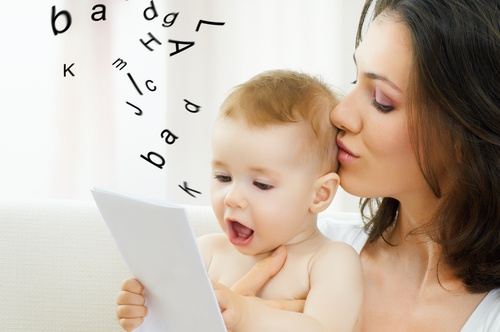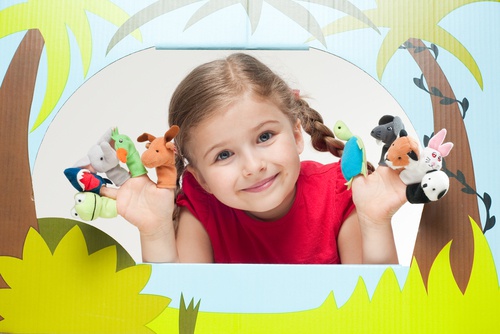Practical Exercises to Help Your Child Learn to Speak

For the first couple of months in a baby’s life, when they don’t know how to talk, crying takes the place of all other forms of expression. We parents await our children’s first words anxiously. But by being smart and doing practical exercises to help your child learn to speak, you can make the wait shorter.
Stimulating our children to learn to speak is relatively simple, but not everyone knows about the activities we can do at home to help them along the way.
Here we will look at some useful exercises to bring babies closer to that moment when they begin to form words, which are recommended for children aged six to thirty-six months.
Help your child learn to speak with these practical exercises
How to promote language acquisition is a question that many people have tried to answer. Parents and specialists, childcare professionals and teachers are all committed to helping babies learn to speak effectively.
To encourage your baby to speak, it is a good idea to have some background knowledge of the activities necessary for language acquisition. These are straightforward enough to implement at home.
In this article, therefore, we will share some of the simplest exercises to reach this sentimental but highly important milestone.
1st Exercise: reading stories

Stories for children are made to be easy to understand and stimulate their emotional capacity. Choose stories that are suitable for their age group.
To develop your child’s ability to speak while reading stories to them, you can ask them to point to an object in the book. Your child will get used to hearing you tell the story, but you can put the book into their hands so that they can “read” it.
2nd Exercise: puppet theater
This fun exercise gets children interested in characters and dialogue. Puppets and marionettes made for children make great teachers. You can encourage your child to speak back to them, describe them or answer their questions.
You can build a theater with objects and props that act as symbols to spark conversation. Disguises and dramatizations are all part of the fun.

3rd Exercise: traditional games
Games that include a song or a dance in which the child interacts with an adult are useful for encouraging speech. These activities normally go along with rhymes, phrases and sounds that the child must respond to, continue or act out, depending on the game.
4th Exercise: children’s songs
The purpose of these songs is to teach children, but they have a special something that makes them irresistible to little ones. Songs are therefore a good way to make learning fun.
These tunes are rich in childhood vocabulary. They are simple, absurd and funny. Children should be encouraged to repeat them over and over, first syllable by syllable and then in longer fragments.
5th Exercise: pictures
To start to feed that abstract code known as “linguistic signs,” it is important for children to start to relate the images they see to the words that describe them.
For this reason, we can begin by showing them photographs, cartoons and all kinds of pictures, to start to give them the semantic and dialectic information associated with each one. The child can describe what they see in the images to start to create new concepts and acquire new vocabulary.
What is the recommended age to begin these exercises?
It is common for little ones to start to show signs of understanding from about six months of age onwards – smiling, paying attention when spoken to and making his or her first vocalizations. At this age, it is a good idea to begin with suitable exercises to stimulate their speech.
Between nine and eighteen months of age, the baby will be able to respond in more syllables. They will point to what they want, express acceptance or rejection, and know the names of many different things and people. They will also begin to use gestures with meanings of their own.
From their second year onwards, they will use full words and demonstrate that they know the meaning of these. This is the moment to use exercises designed for encouraging children to speak.
At thirty-six months, children will be capable of taking part in all of the exercises described above, though they will have more difficulty with some than others. If this is not the case, it’s best to consult a specialist.
All cited sources were thoroughly reviewed by our team to ensure their quality, reliability, currency, and validity. The bibliography of this article was considered reliable and of academic or scientific accuracy.
- Navarro Pablo, M. (2003). Adquisición del lenguaje. El principio de la comunicación. Cauce, 26, 321-347. https://idus.us.es/xmlui/bitstream/handle/11441/13138/file_1.pdf?sequence=1
- Oléron, P. (1985). El niño y la adquisición del lenguaje. Ediciones Morata.
- Vila, I. (1991). Lingüística y adquisición del lenguaje. Anales de Psicología/Annals of Psychology, 7(2), 111-122. https://revistas.um.es/analesps/article/view/28361
This text is provided for informational purposes only and does not replace consultation with a professional. If in doubt, consult your specialist.








